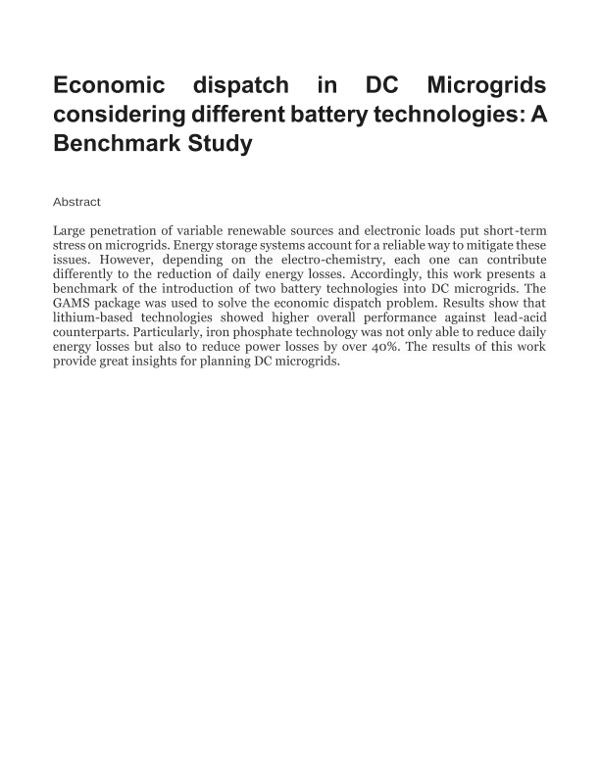Abstract
Large penetration of variable renewable sources and electronic loads put short-term stress on microgrids. Energy storage systems account for a reliable way to mitigate these issues. However, depending on the electro-chemistry, each one can contribute differently to the reduction of daily energy losses. Accordingly, this work presents a benchmark of the introduction of two battery technologies into DC microgrids. The GAMS package was used to solve the economic dispatch problem. Results show that lithium-based technologies showed higher overall performance against lead-acid counterparts. Particularly, iron phosphate technology was not only able to reduce daily energy losses but also to reduce power losses by over 40%. The results of this work provide great insights for planning DC microgrids.













